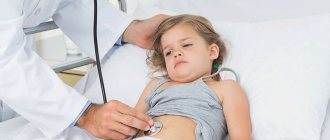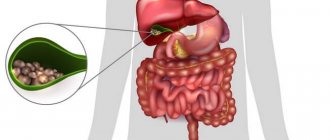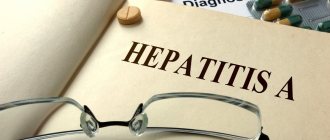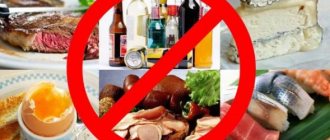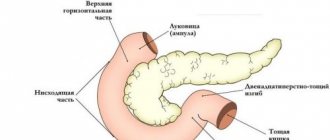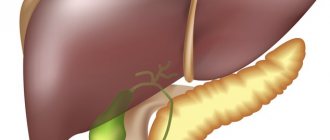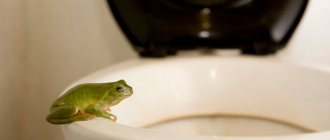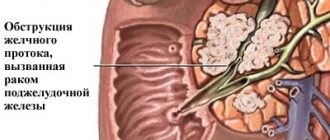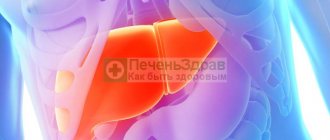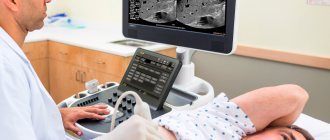Cholangitis is an inflammation of the bile ducts, which has an acute or chronic course and any etiology. The disease usually complicates other pathologies of the gastrointestinal tract (pancreatitis, gastritis, duodenitis, hepatitis, cholelithiasis). The prevalence of the pathology is about 0.1% among the adult population and is more common in women over 55 years of age.
What is this?
Chronic cholecystitis and cholangitis are united by the fact that they are diseases of the gallbladder. The difference is in the location of the organ damage and the course of the disease.
Chronic cholangitis is an inflammation of the bile ducts, both external and internal ducts. It is characterized by a long, relapsing course (which is why the disease is called chronic). May ultimately lead to cholestasis.
Chronic cholangitis. What kind of disease? Inflammatory processes in the bile ducts due to the penetration of infection into them from the organs of the digestive tract (gallbladder, intestines), blood vessels. Less commonly, the infection can enter through the lymphatic tract. One of the common causes of the disease is toxoplasmosis. Domestic cats are carriers of Toxoplasma itself.
general information
Previously, cholangitis was mainly diagnosed in the older age category, but in recent decades it has increasingly been detected in forty-year-old individuals. Mostly women suffer from this pathology. The disease usually occurs against the background of other gastrointestinal tract anomalies - gastro- and duodenitis, cholelithiasis, gastritis, hepatitis, cholecystitis, pancreatitis. In this regard, the course of the disease is quite severe. In addition, concomitant diseases create a certain obstacle to the effective prompt elimination of the cause of the disease. An acute purulent process of inflammation in the biliary tract, which forms against the background of poor outflow of bile due to complete or partial blockage, leads to a purulent form of cholangitis.
The disease is characterized by the following clinical picture: jaundice, which rapidly increases, pain in the right side under the ribs, high temperature, feeling of cold. One of the complications of the disease is a combination of systemic inflammatory reactions to the process in the biliary tract with impaired consciousness, hemodynamics, kidney function and other organs. The diagnosis is made on the visualization of a mechanical obstruction identified by CT or ultrasound of the abdominal organs. Decompression of the biliary tract with elimination of obstruction is carried out through surgery, after which antibiotic therapy is prescribed. Other violations are subject to further correction.
Basic information about the disease
Among the main clinical signs of chronic cholangitis are severe pain in the liver area, fever, chills, and jaundice. The main diagnostic direction here today is ultrasonography of the pancreas and the bile ducts leading to it. Methods such as retrograde cholangiopancreatography, computed tomography of the bile ducts, as well as general and biochemical blood tests are also used.
As for the treatment of chronic cholangitis, the most effective is the combined option. This is a combination of antibacterial conservative, analgesic therapy, detoxification, as well as surgical decompression of the biliary tract.
As for chronic cholangitis in ICD-10, it is designated under code K83.0.
Classification of types of disease
The previous section discussed various types of cholangitis, which differed in the causes of the disease. So, for example, there are bacterial, viral, autoimmune and helminthic types of disease. However, cholangitis is also divided according to other characteristics. The main types will be discussed below.
Primary sclerosing type
A little was said above about what primary sclerosing cholangitis is, but it would be useful to consider this issue in a little more detail. It’s worth starting with the fact that this is chronic cholangitis, in which scars form in the bile ducts. As a result, bile cannot move normally through the channels, which means that the liver does not work as it should.
The reasons that contribute to the development of a disease such as primary sclerosing cholangitis are not fully understood, but it is assumed that this is associated with autoimmune diseases. People whose relatives had this disease fall into the risk category. Also, primary sclerosing cholangitis occurs somewhat more often in men than in women.
Primary sclerosing cholangitis
Purulent type of disease
Purulent cholangitis is usually bacterial in nature and is characterized by the presence of wounds on the walls of the bile ducts. The wounds begin to fester over time, and in some cases tissue necrosis may even begin. This type of disease sometimes behaves like acute cholangitis, and sometimes takes a chronic form.
The purulent type of cholangitis is dangerous, first of all, because its disease picture is similar to other varieties of this disease, and improper and untimely treatment can lead to severe complications: liver failure, the occurrence of many abscesses in the liver, purulent intoxication, etc.
Cholecystocholangitis
Cholecystocholangitis, or, as it is also called, angiocholecystitis, is a chronic disease in which the gallbladder and bile ducts become inflamed. It is impossible to identify the concepts of “chronic cholangitis” and “cholecystocholangitis”, since cholecystocholangitis is another, more general disease that involves the presence of inflammatory processes not only in the bile ducts, but also in the gallbladder. Otherwise, everything is very similar: cholecystocholangitis is caused by bacterial, viral and parasitic infections, congenital pathologies, allergic reactions, mechanical interventions, autoimmune diseases, etc. Symptoms and treatment methods for a disease such as cholecystocholangitis are also similar to classic cholangitis.
Statistical data
Let us now turn to world medical statistics. Unlike chronic cholecystitis, cholangitis is much less common. As in comparison with other inflammatory diseases of the hepatobiliary system.
The pathology mainly develops in adults. The average age of patients is 50 years. There are no observations of a more frequent susceptibility to the disease in men or women.
In most cases, it manifests itself against the background of existing diseases of the liver and gall bladder. It is noted that in 37% of cases the disease will be diagnosed after cholecystectomy.
It is impossible not to mention the specific form of the disease - sclerosing cholangitis. It progresses against the background of relative health of the person. Develops slowly over an average of 10 years. And ultimately leads to irreversible liver damage. There is no reliable data on the true incidence rates of the sclerosing form, since its diagnosis is still difficult. But, it must be said that recently the number of recorded cases has increased. Which, first of all, indicates an improvement in the quality of diagnostics.
If we talk about mortality from the chronic form of cholangitis, there are no clear figures. Depending on the timing of detection of the disease and the correctness of therapy, it ranges from 15 to 90%.
Diagnostic methods
To confirm the diagnosis, a complex of instrumental and laboratory research methods is carried out.
A clinical blood test is recommended - the concentration of ESR, leukocytes and neutrophils is assessed. Urine analysis for the presence of bilirubin. Blood biochemistry - determine reactive protein, total and direct bilirubin, GGTP, AST, ALT, alkaline phosphatase.
In acute cholangitis, all of the above indicators are above normal. And against the background of a chronic course, it is within normal values, with the exception of the rate of erythrocyte decay. Normally, there should be no bilirubin in urine.
Magnetic resonance cholangiopancreatography is the “gold standard” for diagnosing cholangitis. A special medicine is injected into the patient’s blood, which colors the ducts and gall bladder a certain color. Next, their condition is studied using an MRI machine.
Other instrumental studies:
| Type of study | Description |
| Ultrasound | Assess the condition of the gallbladder and common bile duct. The advantages of the method are that it is informative and safe; it can be done during pregnancy or with a small child. The disadvantages of echoscopic examination are that small bile ducts cannot be examined. |
| Endoscopic retrograde cholangiopancreatography | A special device is inserted through the oral cavity, and upon reaching the final part of the common bile duct, a contrast agent is injected. It is distributed throughout the channel system, which allows it to be visualized in the image. The downside of the study is the high risk of complications. |
| HHH | The bile ducts are filled with contrast, and then photographs are taken. The main difference from the previous technique is the method of delivery of the contrast component. It is injected directly into the canal through the skin or liver under the control of an ultrasound machine. |
Causes
Is it possible to develop chronic cholangitis after removal of the gallbladder? Yes, in many cases. This disease is more bacterial in nature. It can be caused by almost all pathogens that are present in the digestive tract:
- Proteas.
- Enterococci.
- Escherichia coli.
- Klebsiella etc.
In almost all cases, infection with several such pathogens is observed simultaneously. And at the same time, it is very rare that when bile is cultured, only one single bacterial agent is detected. In many cases, with the chronic type of cholangitis, the presence of bacteria in the patient’s blood is also detected (positive culture for blood sterility).
As we have already said, risk factors for this disease are various surgical, diagnostic, and therapeutic interventions affecting the bile ducts. They can be performed against the background of both congenital developmental anomalies and various infectious processes.
Cholangitis Clinic
Acute and chronic cholangitis are difficult diseases to diagnose.
With the same disease, two patients may have different clinics.
Sometimes inflammation is disguised as another ailment and occurs latently, which further complicates the diagnostic process.
Acute form
Acute (reactive) cholangitis is a dangerous condition that requires immediate assistance from medical specialists. Lack of therapy leads to blood poisoning, with a high probability of death.
Triad of acute cholangitis:
- Increase in temperature. Typically, a febrile state appears suddenly, the temperature rises to 40 degrees. The patient complains of severe weakness and headache. There is increased sweating, which increases the risk of dehydration. In some patients, the temperature “jumps” and does not always stay at the same level.
- Jaundice, itchy skin. These two symptoms have the same causes, caused by an increase in the concentration of bilirubin in the blood. Bilirubin is a toxin that is formed after the breakdown of red blood cells and is excreted along with bile or urine. Since the normal process is disrupted due to inflammation, bilirubin accumulates. The patient's whites of the eyes, mucous membranes, and integument turn yellow, and the skin itches.
- Pain in the right hypochondrium. If you run the edge of your palm along the edge of the costal arches on the right and left, then the pain syndrome will be on the right. This indicates cholangitis and inflammation of the gallbladder.
The listed signs may be supplemented by other symptoms - decreased blood pressure, increased heart rate and pulse.
Chronic form
It is difficult to suspect chronic cholangitis, since against the backdrop of a sluggish course of the disease, a person’s well-being deteriorates slightly. The variety of forms of the disease further complicates diagnosis. Each patient has chronic inflammation with its own symptoms.
A hint for making the correct diagnosis is the patient's medical history:
- Removal of the gallbladder (this operation is called cholecystectomy). According to statistics, after surgery, 1/3 of patients develop cholangitis.
- GSD is one of the risk factors.
- In the past, acute cholangitis was treated incorrectly.
People with such a history have a high risk of developing cholangitis. Chronic inflammation can also be suspected based on the following complaints:
- Disorders of the digestive tract.
- Yellowing of the skin.
- Pain in the upper abdomen on the right.
- Constant weakness and lethargy, decreased ability to work.
- Feverish state of idiopathic etiology.
- Bitter taste in the mouth.
Such complaints indicate a number of other gastroenterological diseases, so a comprehensive differential diagnosis is required.
PSC
The primary sclerosing form of the disease is asymptomatic in 55% of cases. 20-60% of patients are diagnosed with the disease when they already have cirrhosis of the liver. Up to 20% suffer from malignant liver disease as a consequence of PSC.
This suggests that PSC is very difficult to detect. On the one hand, patients rarely go to the doctor with mild symptoms, on the other hand, not every specialist will suspect a rare but insidious disease.
What contributes to the development of the disease?
What can contribute to the entry of bacteria and intestinal microflora into the biliary tract? Usually it's the following:
- Impaired functioning of the duodenal papilla.
- Both lymphogenous and hematogenous dissemination of various bacterial agents.
This mechanism of infection of the bile ducts can be observed in the following:
- Anomalies in the development of the bile ducts themselves, the presence of congenital cysts, etc.
- Stenosis and deformation of the biliary tract after surgical interventions or endoscopic procedures.
- Tumors of the biliary tract or the pancreas itself.
- Cholestasis developed against the background of cholelithiasis.
- Parasite infestations.
As a rule, for the formation of chronic cholangitis, a combination of three factors is necessary:
- Translocation (entry) of intestinal microflora into the bile ducts.
- Cholelithiasis.
- Increased intraductal pressure.
It should be noted that the chronic form of cholangitis can also develop as a continuation of acute cholangitis. But we cannot exclude the primary, purely chronic course of the disease.
Symptoms of cholangitis
Signs of cholangitis depend on its form.
Acute cholangitis always begins suddenly. Its symptoms are:
- fever and hyperthermia;
- stomach ache;
- signs of intoxication;
- dyspeptic symptoms;
- jaundice.
Hyperthermia and fever are the symptoms with which acute cholangitis usually begins:
- body temperature rises to 39-40 degrees Celsius;
- chills are observed;
- Sweating is pronounced.
Characteristics of pain:
- begin almost simultaneously with fever;
- by location - in the right hypochondrium;
- by irradiation (spread) - radiates to the right arm, shoulder, right half of the neck;
- by nature - cramping, reminiscent of hepatic colic;
- In terms of intensity – strong.
Signs of intoxication are:
- progressive weakness;
- loss of appetite;
- headache;
- decreased performance.
Dyspeptic symptoms soon develop:
- nausea;
- vomiting that does not bring relief;
- diarrhea.
The last thing to occur is jaundice - yellowing of the skin, sclera and visible mucous membranes. Due to the accumulation of bile pigments and their irritation of nerve endings, jaundice provokes itchy skin.
Important
Characteristic is increased itching at night, which disturbs the patient's sleep.
The main signs of acute cholangitis are three symptoms that make up the so-called Charcot triad:
- significant hyperthermia (increase in body temperature);
- pain in the right hypochondrium;
- jaundice.
If the course of acute cholangitis is particularly complex, then disturbances in consciousness and manifestations of shock are added - these five most important symptoms of this disease are called Reynolds' pentad. We can say that this is the main guideline, thanks to which clinicians make a diagnosis of acute cholangitis.
The signs of the chronic form of cholangitis are similar to the signs of the acute form, but erased - on the other hand, as the disease progresses, they gradually increase. In this case, abdominal pain:
- stupid;
- weak;
- in some cases it is not pain, but a feeling of discomfort and fullness in the upper abdomen.
Jaundice is present in chronic cholangitis, but it occurs quite late, when inflammation has long arisen and worsened in the bile ducts - in fact, these are far-advanced pathological changes.
General signs of chronic cholangitis are also present, but they are not as pronounced as in acute cholangitis. In particular, the following are observed:
- increase in body temperature to subfebrile levels;
- fatigue, but not critically affecting performance;
- feeling of weakness.
Main symptoms at an early stage
The main symptom of chronic cholangitis is the identification of the so-called Charcot triad. It includes the following:
- Moderate pain felt in the right hypochondrium.
- Chills - an increase in the patient’s body temperature to subfebrile levels.
- Jaundice.
As for the signs of chronic cholangitis, the patient suffers from dull, low-intensity, aching pain. After biliary colic, he feels a moderate fever and mild chills.
As for the clinical picture, it is erased and recurrent. Therefore, patients, as a rule, rarely pay attention to the first symptoms of the disease.
Chronic cholangitis
The chronic course of the disease is less severe. The disease occurs as a result of an acute process or as a special condition in which exacerbations are not observed. Characterized by periodic paroxysmal pain
in the right hypochondrium, nausea, lack of appetite.
The chronic form can occur in parallel with cholecystitis, cholelithiasis, and liver diseases.
Inflammation of the bile ducts with sluggish cholangitis requires
maintaining a diet
, taking choleretic drugs or herbs.
A weakened body is especially susceptible to infections, so in case of exacerbation, antibiotic treatment is prescribed.
How to treat chronic cholangitis should be discussed with your doctor. Self-medication is not recommended
so as not to provoke an exacerbation.
You can combine folk and traditional methods, but at the same time inform the doctor and periodically check the ducts using computed tomography.
Cholangitis after removal of the gallbladder can become chronic. The reason for this is the insufficient quality of the operation. After cholecystectomy, inflammatory reaction
always present in a mild form. It goes away quickly after using antibiotics and anti-inflammatory drugs.
Persistent inflammation of the bile ducts occurs when the surgeon does not remove stones or cystic formations from them. Stones that are infected have a particularly negative effect on the condition of the ducts and tend to damage the inner wall of the bile duct and contribute to the development of the inflammatory process.
Magnetic resonance cholangiopancreatography is used to diagnose the condition of the ducts. Sometimes repeated intervention is required.
Primary sclerosing cholangitis
Chronic manifestations of inflammatory diseases of the ducts include primary sclerosing cholangitis. This disease takes a long time to develop – from the first manifestations to the final stage it can take up to 12 years.
During the course of the disease, liver failure develops.
A distinctive feature of this disease is that it affects mostly men.
Symptoms
are:
- osteoporosis and weight loss;
- deficiency of vitamins K, D, E and A;
- the presence of stones
in the gallbladder ducts, narrowing of the lumen; - cholangiocarcinoma and rectal cancer are more common in sclerosing cholangitis;
- biliary cirrhosis of the liver and internal bleeding are the final stage of the disease.
Treatment is supportive. The only way out of the situation may be a liver transplant.
Survival prognosis is up to 10 years with supportive drug treatment.
Main symptoms in the late stage
If we move on to the signs of chronic cholangitis (cholecystitis is a completely different disease) already at a late stage, you will notice the following:
- Icterus (in simple words, jaundice) of both the skin and mucous membrane.
- Increased fatigue.
- General weakness (generally expressed when the patient is elderly).
As for the patient’s age over 60 years, diagnosis in this case is significantly difficult. The clinical picture will not correspond to the severity of the inflammatory process occurring in the bile ducts. The symptoms are too vague, so it is difficult even for a specialist to establish the correct diagnosis.
Clinical picture of cholangitis and its symptoms
Clinical signs of inflammatory processes in the bile ducts include damage to the bile ducts themselves and damage to areas adjacent to the liver.
Clinic
The disease is often a concomitant pathology with choledocholithiasis and other diseases that are associated with obstructive jaundice. The clinical picture of the disease is based on the appearance of infection in the bile. The course of the pathological process in various forms of inflammation can be acute or chronic.
A characteristic clinical sign of the disease is Charcot's triad: pain in the abdomen on the upper right, fever, jaundice of the skin.
With an acute type of inflammation, the body temperature quickly rises, chills appear, the patient feels nauseous, vomiting, a feeling of heaviness and dull pain on the right side under the ribs. With this type of disease, the clinical signs are erased, but the symptoms of the pathology progress. The disease begins with discomfort and bursting pain in the epigastric region, which later progresses to pain. The initial stages are not accompanied by yellowness of the skin; it appears in advanced cases. The chronic type of inflammation is accompanied by increased fatigue and weakness.
The purulent form is clinically manifested by acute pain and yellowness of the skin. External signs of the disease indicate that the liver parenchyma is affected. The patient's temperature rises to critical values, breathing becomes more frequent, and tachycardia occurs. The acute stage of the disease requires immediate hospitalization.
The chronic sclerosing type is characterized by the presence of a constant inflammatory process in the bile ducts. As a result, the walls of the bile ducts become thicker - sclerosis and obstruction of the internal bile ducts of the liver occurs. In the chronic type of the disease, the pathogenic process is observed in all bile ducts.
Symptoms of cholangitis
An initial physical examination reveals the following symptoms of the disease:
- yellow-bronze tint of the skin and whites of the eyes;
- weakness in the body, apathy, drowsiness;
- loss of appetite accompanied by weight loss;
- pain in the right hypochondrium, radiating to the neck, shoulder, shoulder blade;
- attacks of fever and chills;
- symptom of excessive sweating;
- shingles headache, fever;
- diarrhea;
- attacks of nausea and vomiting;
- signs of intoxication of the body;
- Palpation reveals enlargement and tenderness of the lower edge of the liver.
In particularly severe forms, disturbances of consciousness and states of shock develop.
Complications of the disease
This form of the disease, such as purulent chronic cholangitis, can lead to the infection entering the systemic bloodstream. And this is already fraught with the development of septic biliary shock. Its result in 30% of cases is lethal.
The following complications are no less dangerous to the life and health of the patient:
- Porto-caval thrombosis.
- Liver abscess.
- Other types of septic manifestations.
As for the sclerosing chronic form, it can result in the following consequences:
- Hepatocellular carcinoma.
- Cirrhosis of the liver.
Forecast
The prognosis for cholangitis varies. With the catarrhal form of cholangitis, it is satisfactory, with purulent, diphtheritic and necrotic forms it is more serious: in this case, the outcome can be favorable for the patient only in the case of verified prescriptions and scrupulously adhered to treatment.
If inflammation of the biliary tract occurs with complications, then the prognosis is unsatisfactory. This is especially true for diseases such as:
- formation of abscesses in the bile ducts;
- cirrhosis of the liver;
- hepatic-renal failure;
- septic damage to the body.
Kovtonyuk Oksana Vladimirovna, medical observer, surgeon, consultant doctor
7, total, today
( 190 votes, average: 4.53 out of 5)
Steatorrhea – fatty stool
Liver intoxication: symptoms and treatment
Related Posts
Laboratory diagnostics
If you even suspect symptoms of a chronic type of cholangitis, you should definitely seek advice from a gastroenterologist. To make a preliminary diagnosis, the doctor makes sure that the patient has Charcot's triad.
Further, to clarify the verdict, it is necessary to undergo a series of laboratory tests. Here the following emerges:
- General blood analysis. If the patient has chronic cholangitis, high leukocytosis, increased ESR, as well as a neutrophilic shift in leukocyte formulas will be detected.
- Blood chemistry. If the diagnosis is established correctly, then the results of screening will be an increased level of bilirubin, G-GTP activity and alkaline phosphatase.
- Microbiological research. In almost all patients, intestinal microflora is found in the bile. In half of the patients, bacteria are also found in the blood.
Diagnostic methods
The symptoms of cholangitis, especially acute one, are pronounced and indicate the presence of liver problems, however, in order to make an accurate diagnosis and prescribe treatment for cholangitis, a number of additional tests are required. Here are the main ones:
- Initial examination. Palpation is performed on it, with the help of which you can determine whether the liver is enlarged and thickened, or whether pain is present.
- Liver tests (this is a blood test). Allows you to find out the level of certain enzymes and bilirubin.
- Study of bile obtained by duodenal intubation.
- Cholecystography, excretory cholegraphy.
- Ultrasound. Allows you to evaluate the size of the gallbladder and liver.
- Analysis of stool for the presence of parasites.
- Biochemical blood test.
Duodenal sounding
Instrumental diagnostics
Doctors also turn to instrumental diagnostic methods. In particular, ultrasonography of the biliary tract and the pancreas itself is performed. Here you can see thickening and some expansion of the walls of the bile ducts.
Computed tomography, which is widespread today, is no less important. It not only confirms the data obtained during ultrasound examination, but also helps to timely identify complications of the purulent form of chronic cholangitis. In particular, various purulent abscesses and pylephlebitis.
To perform retrograde cholangiopancreatography, an additional consultation with an endoscopist is required. Such an examination helps not only to visualize the stones located in the bile ducts, but also to indicate their specific extensions.
Recently, ERCP has been replaced by magnetic resonance cholangiopancreatography. Its undoubted advantage is that it is a non-invasive diagnostic method. It not only identifies the symptoms of chronic cholangitis, but also helps to establish the causes of its development.
If diagnostic tests are performed immediately before surgery, transhepatic cholangiography may be used. The needle is passed through the patient's skin and then through his bile duct. This is how contrasting and drainage of the latter are carried out.
Types of cholangitis
There are known types of inflammation of the bile ducts:
- Catarrhal type. With this type of disease, hyperemia and swelling of the mucous membrane of the bile ducts occurs. Leukocyte infiltration is detected on the walls of the bile ducts.
- Purulent type. This type of pathology is characterized by the formation of multiple pustules in the tissues of the walls of the bile ducts and changes in their structure.
- Diphtheritic type. This form of the disease is accompanied by the appearance of a fibrinous film on the walls of the bile ducts.
- Necrotic type. Occurs against the background of necrosis.
- Ascending type – intrahepatic and extrahepatic pathogenic process.
- Sclerotic type. The disease is caused by the proliferation of connective tissue, as a result of which the bile ducts are deformed, which leads to their blockage. Secondary sclerosing cholangitis is not completely cured; as a result of therapy, it goes into remission, but periodically worsens.
- Acute type. This variety can be catarrhal, purulent, diphtheritic or necrotic.
- The chronic type is the most common form of the disease. Most often it occurs as a complication after acute inflammation. Cholangitis is classified according to stages. In its development, there is a latent phase, a recurrent period, a long septic phase, the period of formation of abscesses on the walls of the bile ducts and the stage of their sclerotization.
Ducts affected by cholangitis, on x-ray
The etiology of the disease is used to classify cholangitis into parasitic, bacterial and aseptic.
It is also customary to classify pathology according to the location of inflammation:
- choledochitis - the common path of bile drainage is inflamed;
- angiocholitis - inflammation of the bile ducts in the liver and in areas adjacent to it;
- papillitis - a violation of the drainage of bile due to inflammation of the liver papilla.
Similarities with other diseases
When diagnosing chronic cholangitis, specialists need to be especially careful - the disease is similar in its manifestations and symptoms to a number of other pathologies and diseases:
- Blockage of the bile ducts (observed in cholelithiasis).
- Viral hepatitis.
- Calculous and acute cholecystitis.
- Tumors of the bile ducts, liver or pancreas.
- Bile duct strictures due to another reason.
Causes of the disease
Cholangitis is divided into primary and symptomatic , resulting from the following diseases:
- Narrowing and cicatricial modifications (structures) of the BDS or large ducts of an inflammatory nature. BDS is the large duodenal (Vater) nipple, the place of discharge of bile and pancreatic juice into the lumen of the duodenum. When the outflow of bile is disrupted, stagnation occurs.
- Narrowing of large ducts or the papilla of Vater in various types of tumors is a frequent complication of many oncological diseases of the upper floor of the digestive tract.
- Acute pancreatitis (or exacerbation of chronic) - compression of the common bile duct by the enlarged head of the pancreas can lead to stagnation of bile and inflammation in the ducts.
- Insufficiency (incomplete closure) of the sphincter of Oddi.
- Hepatitis (cirrhosis) due to cholestasis (stagnation of bile).
- Postoperative complications in the form of cholangitis.
The direct cause leading to the development of cholangitis can include bacterial, parasitic (helminthic), toxic, less often viral or autoimmune damage.
bacterial cholangitis occurs , when the main causative agents of the disease are Escherichia coli, streptococci, staphylococci, and enterococci. Other pathogens are rare in cholangitis.
All cholangitis can be divided into two large groups - acute inflammation and chronic processes, characterized by a long course with episodes of exacerbations and relatively calm periods (remission). The nature of inflammation when the bile ducts are damaged can be catarrhal, purulent, or less often destructive.
Drug therapy
In the article we examine, among other things, the symptoms and treatment of chronic cholangitis. As for therapy, it is predominantly outpatient. Hospitalization to the gastroenterology department of a hospital is required only in special cases:
- Malignant cholestasis.
- Severe course of the disease.
- Advanced age of the patient.
Drug treatment here is preliminary - this is the first step towards surgical unloading of the bile ducts. In particular, the body is detoxified, and the patient is prescribed antimicrobial and painkillers. Before obtaining bacterial cultures, broad-spectrum antibiotics are prescribed. These are penicillins that can penetrate bile, cephalosporins and aminoglycosides. If the nature of the infection is parasitic, additional appropriate medications are prescribed.
Treatment
Treatment tactics differ significantly depending on the type of cholangitis. Treatment of patients with purulent inflammation is always carried out in a hospital. The first stage is medicinal preoperative preparation. Appointed:
- Painkillers. For cholangitis, Buscopan, Pentazocine or Promedol can be used (in case of severe pain and no effect from other drugs).
- Broad-spectrum antibiotics. The use of cephalosporins or ureidopenicillins is recommended.
- Antiparasitic medications. Indicated only when persistent helminths are detected. Mebendazole is used to treat ascariasis; clonorchiasis and opisthorchiasis - Baltricide, fascioliasis - butionol.
Expert opinion
Shoshorin Yuri
General practitioner, site expert
During the treatment of cholangitis, patients are prescribed fasting with intravenous administration of electrolyte solutions and protein preparations intended for parenteral nutrition.
After normalization of the general condition and delimitation of the inflammatory focus, it is possible to perform one of the following methods of surgical correction:
- Papillosphincterotomy using endoscopic methods.
- Insertion of the endoprosthesis into the common bile duct. The prosthesis helps maintain a wide lumen by stretching the walls of the duct.
- Cholangiostomy. Produced transdermally. The affected segment is removed and an anastomosis is performed between the two ends of the biliary ducts.
Sclerosis of the bile ducts requires the use of a completely different treatment regimen. Patients undergo mechanical (balloon dilatation of the bile ducts) and surgical (duct plastic surgery, liver transplantation) interventions. Afterwards, drug therapy is prescribed, including:
- Ursodeoxycholic acid preparations (to protect hapatocytes).
- Glucocorticosteroids. Prednisolone is ideal.
- Azathioprim - only for autoimmune diseases, to suppress auto-aggressive defensive reactions.
Medicines and tablets for treatment
| Name of the drug | Pharmacological group | Description of action | Directions for use and doses | average cost |
| Buscopan | M-anticholinergic, antispasmodic | Blocks M-cholinergic receptors in nerve synapses, preventing the transmission of pain impulses. | 0.02 to 4 times a day intramuscularly or intravenously. | 100-150 rubles |
| Promedol | Narcotic analgesic | Activates the antinoceceptive system in the brain and disrupts the process of impulse transmission between neurocytes. | From 0.025 to 0.15 per day, intravenously. | About 120 rubles |
| Ceftriaxone | Broad-spectrum antibacterial agent, cephalosporin. | Prevents the synthesis of the cell membrane of bacterial cells, inhibits growth and reproduction. | 2.0 2 times a day intramuscularly. | About 180 rubles |
| Piperacillin | Broad-spectrum antibacterial agent, ureidopenicillin. | Prevents the synthesis of the cell membrane of bacterial cells, inhibits growth and reproduction. | 0.3 per kilogram of body weight, 1 time per day, orally. | From 160 rubles |
| Mebendazole | Anthelminthic drug | Depletes glycogen reserves and prevents the synthesis of new ATP molecules in parasite cells. | 0.1 2 times a day, 3-4 days, orally. | 100-120 rubles |
| Bullicide | Anthelminthic drug | Disturbs the structure of germ cells of helminths, reducing their reproduction. | 0.025 per kilogram of body weight, 3-5 days, orally. | About 450 rubles |
| Bithionol | Anthelminthic drug | It has a membrane toxic effect on all cells of the parasite, causing its death. | 1.0 3 times a day, for 14 days | 300-340 rubles |
Surgery
The main goal of surgery for chronic cholangitis is to remove stones from the bile ducts, which can improve and stabilize the flow of bile. That is, drainage of the biliary tract is carried out.
For this purpose, the following operations are carried out:
- External drainage of the biliary tract.
- Transhepatic percutaneous drainage.
- Nasobiliary type of drainage (performed during RPCG).
- Extraction of stones from common bile ducts.
- Extraction of stones from the bile ducts during RAC.
- Balloon endoscopic dilatation of the sphincter of Oddi.
- Endoscopic stenting of the common bile duct.
As for rehabilitation in the postoperative period, it is very important to follow a special diet for chronic cholangitis. It is compiled by your attending physician. It is important to include in your diet foods rich in both vitamins and vegetable oils. The diet must be combined with choleretic and antibacterial therapy.
Kinds
Acute cholangitis can be primary or secondary. The cause of primary inflammation of the ducts is the ingress of helminths, bacteria or viruses - pneumococci, E. coli, Giardia, opisthorchid, strongyloides and other pathogenic organisms. If microorganisms enter from the intestines, then cholangitis develops from the common bile duct to the intrahepatic branched ducts.
With pancreatitis, reflux sometimes occurs, as a result of which active pancreatic enzymes cannot be released and begin to dissolve their own tissue. An acute condition develops that can cause inflammation or damage to the bile ducts. If acute symptoms occur, it is necessary to urgently take the patient to the hospital, since without surgical intervention, death is possible.
Secondary cholangitis is the result of cholelithiasis, scar tissue changes, narrowing of the ducts, and the presence of cystic formations. It can also occur in the postoperative period (cholecystectomy).
Purulent cholangitis
One of the types of acute inflammatory processes of the bile ducts is purulent cholangitis.
The reason is the presence of parasitic infestation, low immunity and bacteria of the Escherichia coli species. of detritus in the bile ducts plays an important role in the development of the purulent process
These are undigested residues that are normally excreted in the feces.
The retention of detritus in the bile ducts indicates that digestion is not complete. Masses of detritus contain bacteria and mucus, which together make it possible for infections to develop and cause inflammation.
Stones, detritus and pus are substances that are almost always found in the purulent form of the disease.
The consequence may be the development of hepatitis and abscess, in which pus from the ducts enters the liver tissue and forms a purulent cavity.
This condition can cause sepsis and death.
Autoimmune cholangitis
The disease is rare. Most patients are women. The causes of the disease have not been studied,
but it is believed that the body has antibodies that attack the cells of the liver and bile ducts, damaging them.
Autoimmune cholangitis is treated by adjusting the functioning of the immune system. Drugs are used to suppress the immune system
and anti-inflammatory drugs. The autoimmune form is difficult to diagnose and treat; to do this, it is necessary to conduct a series of tests to identify disease genes in the patient’s closest relatives and select appropriate medications.
Most often, autoimmune diseases of the bile ducts provoke purulent inflammation.
Prevention and prognosis
We must not forget that the chronic type of cholangitis is a rather serious disease, which if ignored, incorrectly or untimely treatment can result in death. The prognosis of the disease here is worsened by the following:
- Female.
- Advanced age.
- Prolonged hyperthermia - more than two weeks (increased body temperature).
- Anemia.
- Disorders of consciousness.
- Insufficient liver and kidney function.
Prevention in this case is secondary. It comes down to two important areas:
- Carrying out preventive diagnostics of the liver, gall bladder and digestive tract as a whole.
- Timely treatment of diseases, infections, pathologies that can cause cholangitis.
We became acquainted with a rather serious disease - inflammation of the bile ducts of an infectious nature. Chronic cholangitis is dangerous because its symptoms (especially in the early stages) are erased. We need comprehensive diagnostics - both laboratory and instrumental. The patient will undergo medication, surgery, and diet.
Treatment for cholangitis
Treatment of cholangitis can be carried out both in an outpatient clinic and in a hospital department. The patient must be freed from physical activity. Treatment methods work in combination, so it is important not to miss any aspect of it.
Nutrition method
A diet for cholangitis involves avoiding fatty foods, alcohol, fried foods, dishes with a lot of spices, smoked meats, and canned food. You should also not eat garlic and onions. You need to eat small and often so as not to overload the liver. The following products will be beneficial:
- Lean types of meat (veal, chicken fillet, rabbit) and fish (hake, pike perch).
- Low-fat fermented milk products (kefir, fermented baked milk, low-fat cottage cheese).
- Porridge, especially buckwheat and oatmeal.
- Vegetables – boiled or steamed.
Also, with cholangitis, the drinking regime is important - you need to drink at least 1.5–2 liters of clean water per day.
Drug treatment
During acute attacks, treatment of cholangitis involves taking medications that can relieve inflammation. Usually these are broad-spectrum antibiotics, such as tetracycline, biomycin. Sedatives and painkillers are prescribed to relieve pain.
Conservative therapy
When acute inflammation has been relieved, general treatment methods are used to improve the patient’s condition. Good results in this regard are achieved by staying at mineral water resorts; some physiotherapy (diathermy, UHF), special sets of exercises, mud and paraffin applications are also recommended.
In conclusion, it can be noted that the symptoms of cholangitis are sometimes not very noticeable, but it is important to pay attention to them in time. Treatment of cholangitis at the present time is not too difficult, especially in the early stages, but if the disease is neglected, the complications can be very serious - even cirrhosis of the liver.
Diagnostic measures
Initially, the physician assesses the individual’s medical history and complaints. If inflammation of the bile ducts is suspected, the patient is consulted by an abdominal surgeon. He makes a preliminary diagnosis. The development of biliary sepsis is indicated by the following symptoms: jaundice, increased temperature and pressure, increased pain syndrome, tachypnea, cardiac arrhythmia. In this case, the patient’s body does not respond to the intravenous administration of 500 ml of saline, there is confirmed bacteremia, and there is thick pus in the biliary tract. Signs of acute inflammation are detected based on laboratory tests:
- In the general clinical blood test - an increase in the sedimentation rate of red blood cells, neutrophilic leukocytosis.
- Liver samples showed hyperphosphatemia, hyperbilirubinemia, and elevated cholesterol. In some cases, transaminase activity increases.
To diagnose purulent cholangitis, an ultrasound of the abdominal organs must be performed. Using this type of hardware research:
- identify the cause that caused the disease;
- visualize a mechanical obstruction and expansion of the bile ducts above the level of the obstruction;
- detect modifications of the parenchyma in the event of the formation of a purulent-inflammatory process in the liver.
CT scans clarify and confirm the results obtained. In addition, esophagogastroduodenoscopy is performed. If necessary, i.e. if the doctor does not have complete information, then endoscopic retrograde cholangiopancreatography is recommended. If it is not possible to do it, percutaneous transhepatic cholangiography is used.
The contents of the bile ducts obtained during the study are sent for bacteriological analysis, where the sensitivity of the pathogenic microorganism to antibiotics is determined. Bile is assessed visually by a laboratory assistant. The purulent form of the disease is proven by the presence of pus in it.
How to ensure the outflow of bile: treatment of cholangitis
Treatment of cholangitis is carried out using conservative and surgical methods. The main goal of therapy is to ensure normal outflow of bile, since stagnation will only aggravate the symptoms and increase intoxication.
With any form of treatment, the patient must adhere to a strict diet (No. 5 according to Pevzner) and receive infusion therapy. Patients are also prescribed the following medications:
- Antispasmodics.
- Antibiotics.
- Anti-inflammatory.
- Hepatoprotectors.
- Choleretic drugs.
- Anthelmintic (for proven infection with parasites).
Physiotherapeutic methods are used for patients with chronic cholangitis; courses of procedures are prescribed during periods of remission. Among the commonly used methods:
- UHF.
- Electrophoresis.
- Diathermy.
- Mud applications.
- Sodium chloride baths.
In some cases, it is impossible to get rid of inflammation using conservative methods, so patients undergo various surgical interventions. The list of operations that improve the functioning of the bile ducts includes:
- ERCP: installation of stents that increase the lumen of the canals, removal of stones, expansion of the orifice of the papilla of Vater.
- Percutaneous drainage (used if there are contraindications for ERCP).
- Various methods of gallbladder removal (laparoscopic or open cholecystectomy).
Take the test
Inflammation of the bile ducts is characterized by pronounced pain in the abdominal area. Many patients also complain of a bitter taste in the mouth, as well as a feeling of nausea in the morning. The inflammatory process can occur in a chronic or acute form, manifesting itself in diseases such as cholangitis, cholecystitis, cholangiohepatitis. There are a lot of reasons that cause diseases of the biliary tract, and the symptoms indicating the presence of the disease are clear and characteristic, which allows you to quickly and accurately make the necessary diagnosis and prescribe effective treatment. Only the attending physician can eliminate the inflammatory process. Treating the disease yourself is dangerous.
Diagnosis and treatment
If any symptoms occur, you should immediately consult a doctor. To make an accurate diagnosis, the doctor refers the patient to an ultrasound, biochemical and general blood test. Thus, the doctor will receive a complete picture of the patient’s condition and also find out at what stage the disease is. If it is not aggravated, the doctor may prescribe additional x-ray studies.
Once the diagnosis is confirmed, the attending physician will stop the inflammation and also recommend detoxification of the gallbladder and bile ducts. Patients should use antibacterial drugs as adjuncts. If parasites are detected, anthelmintic medications will be required.
Infusion therapy helps well in these cases, and the patient is prescribed a special diet. Thus, fried foods, fatty foods, and smoked foods are completely excluded from the patient’s new diet. Do not overuse spices, canned food, or sausages.
They are being replaced by dairy products, light soups (preferably without meat), steamed fish, vegetables, fruits, still mineral water, natural juices, herbal teas. As a rule, the attending physician determines the patient's diet, but consultation with a nutritionist or other specialist may be necessary.
The complex of therapy involves the use of conventional antispasmodics (in case of severe pain), various choleretic drugs and decoctions, and sometimes antibiotics.
Often, in order for the biliary (bile) duct to continue normal functioning, doctors use the tubage method. It involves washing the ducts using a special probe.
The patient can carry out the cleansing independently at home. This way the disease will go away sooner. To do this, you need to drink warm mineral water or herbal decoction in the morning on an empty stomach. Then you need to rest for an hour and a half with a warm heating pad, which is placed on your right side. If a positive effect has been achieved, the stool will acquire a greenish tint. This cleansing should be done at least once a week for 2-3 months. Before this, the patient must consult a doctor.
Important: such procedures are strictly prohibited for patients who suffer from chronic cholecystitis or ulcers.
Diagnostics
Based on clinical signs, the disease can be suspected. However, this is usually not enough. Anamnesis is of great importance in the diagnosis of cholangitis. At the same time, possible causes of the disease and the patient’s complaints are examined. Diagnosis can be based on congenital pathologies of the bile ducts.
Diagnostic methods also include laboratory and instrumental studies. In some cases, biochemical tests are required. When they are used, the following manifestation of the disease in blood parameters can be observed:
- increase in bilirubin;
- increased alkaline phosphatase;
- increase in alpha amylase
If a pathogen is present, probing with bile culture is required. This helps not only to identify the causative agent of the disease, but also to determine the mixed bacterial flora. What is the most common pathological factor.
If there is a parasitic infection, then a stool test for helminth eggs is used. Typically this study is carried out three times. Since a single study has questionable results.
The disease has a systemic lesion. That is why ultrasound examination of the abdominal cavity and liver is often used in diagnosis. This makes it possible to identify a damaging factor affecting other organs and systems.
The most accurate study in the diagnosis of cholangitis is CT of the biliary tract. With this study, it is possible to identify pathological changes in the bile ducts. X-rays are also used.
An x-ray allows you to visually examine the structure of the biliary tract. It is imperative to differentiate the disease from viral hepatitis. And also differentiate cholangitis from pneumonia.
In adults
Cholangitis in adults occurs more often at the age of fifty years and above. It is a consequence of various diseases. Moreover, these diseases are associated with insufficient treatment of pathologies. Or with the lack of a proper treatment process.
Cholangitis in adults is a pathology of the female population. In men, this type of disease is much less common. In adults, acute and chronic courses are distinguished. The etiology of cholangitis is most often associated with:
- cholelithiasis;
- malignant and benign tumors;
- pancreatitis;
- postoperative interventions.
There are also different types of the disease in adults. These varieties include:
- catarrhal;
- purulent;
- obstructive;
- non-purulent.
Complaints from adults are based on increased body temperature, chills, and pain in the right hypochondrium. The following symptomatic complexes in adults are distinguished:
- lowering blood pressure;
- darkening of urine;
- dry mouth;
- weakness;
- skin itching;
- nausea;
- vomit.
Changes also affect the central nervous system in particularly severe cases. Adults may experience mental disorders. Among the diagnostic techniques, the following activities are a priority:
- inspection;
- palpation;
- percussion.
They also resort to diagnosis using laboratory, instrumental and other studies. The treatment process is general. That is, with the inclusion of conservative and surgical techniques.
go to top
Symptoms
In adults and young children, cholangitis develops differently. Adult patients rarely complain of pain in the acute stage. Their primary symptoms are mild, but if left untreated, the disease quickly progresses, turning into a purulent complicated form, with extensive internal inflammation, fraught with general sepsis.
In children, the acute form of cholangitis practically does not occur. Most often it begins after the addition of a secondary streptococcal infection. The signs of the disease are nonspecific, the symptoms largely coincide with other gastrointestinal diseases, so if they occur, you should consult a doctor who will conduct a differential diagnosis, on the basis of which an effective treatment regimen will be drawn up.
The following signs indicate the development of acute cholangitis:
- aching pain in the right hypochondrium, radiating to the shoulder joint or to the scapula area;
- fever, accompanied by chills and intense sweating;
- attacks of nausea leading to vomiting;
- jaundice accompanied by severe skin itching.
In the absence of adequate measures to treat acute cholangitis, the pathology becomes chronic, which is characterized by the following manifestations:
- decreased performance, constant weakness;
- hyperemic and itchy skin (most often on the palms);
- increased body temperature outside of colds;
- thickening of the distal (nail) phalanges of the fingers.
In childhood, cholangitis leads to weight loss, as the child constantly feels sick and refuses to eat. Intoxication caused by the activity of microorganisms and decay products formed during extensive purulent inflammation leads to the development of an anemic state. The patient's skin is pale, the sclera is yellow. The child may complain of constant headaches. If cholangitis is not treated at this stage, the progression of the disease can lead to slower physical development.
Nutritional features and therapeutic diet
As mentioned earlier, fatty foods must be excluded from the diet. At the same time, the need for fats will be covered by consuming vegetable oils. During the treatment period, it is recommended to use corn, olive or sunflower oil. They have a beneficial effect on the functioning of the bile ducts.
You will have to stop eating lard, pork, lamb, beef or duck. Animal fats are rich in cholesterol, which contributes to the formation of stones.
Berries, fruits and vegetables contain a sufficient amount of plant fiber, which should be consumed as much as possible, as it stimulates bile secretion.
A sample menu for the day consists of the following products:
- first breakfast - no more than 100 grams of unsweetened curd pudding, the same amount of buckwheat porridge with vegetable oil;
- for second breakfast two small apples;
- lunch - some boiled meat, vegetarian cabbage soup, stewed carrots;
- for an afternoon snack, crackers and tea;
- For dinner, boiled potatoes (100 grams) are suitable, as well as boiled fish and baked carrot cutlets.
A healthy eating system must be followed even after the exacerbation of the disease has passed. Some nutritionists recommend following a magnesium diet, indicating that it contains the optimal amount of protein, fats and carbohydrates that the body needs.
For the normal functioning of the bile ducts and other vital organs, it is necessary to eat regularly, but in small portions. It is also important to take into account the fact that cold food, like cold drinks, causes cramps, and this only increases pain and negatively affects the flow of bile.
Definition and data about the disease.
Primary biliary cholangitis (PBC) is a cholestatic, autoimmune disease characterized by destruction of the intrahepatic bile ducts, mononuclear portal inflammation, cholestasis, periportal fibrosis with progression to cirrhosis.
This disease predominantly occurs in women (9 affected women per 1 man out of 10). The disease usually appears between the ages of 30 and 65, although it can develop at younger or older ages.
The majority of patients (95%) will have antimitochondrial antibodies (AMA) , which are determined before the onset of clinical manifestations of the disease. AMAs also occur in approximately 1% of adults without PBC.
PBC is diagnosed, untreated patients may progress to cirrhosis within 4 years. Nowadays, the diagnosis of PBC is often made at earlier stages, so the time of progression to end-stage disease may be delayed. This is due to the effective treatment methods currently available.
Elevated serum alkaline phosphatase and bilirubin levels at diagnosis are prognostic factors in untreated patients. Patients with alkaline phosphatase levels less than twice the upper limit of normal and serum bilirubin levels less than two times 1 year after diagnosis have better survival than patients with higher levels.
Histological picture of primary biliary cholangitis
Nowadays, the development and course of the disease has changed somewhat:
- The age of patients at which this disease is diagnosed has become higher;
- Less severe clinical course;
- Responds well to treatment with ursodeoxycholic acid (UDCA);
- Lower rates of decompensation and longer survival without liver transplantation.
It is unclear whether this is due to earlier diagnosis of the disease due to liver enzyme screening in adults or to changes related to the cause of the disease.
However, the pathogenesis of PBC remains unknown. It seems clear that this is an autoimmune disease, given its association with other autoimmune conditions, such as the presence of sicca complex (dry mucous membranes of the eyes and mouth in autoimmune diseases) and the presence of circulating AMAs.
There is reason to believe that this is a genetic disease, since it exhibits:
- Transfer between generations.
- PBC is common in identical twins.
- Increased risk of developing concomitant diseases in relatives of patients.
Diet
Following a diet for cholangitis is the basis for effective treatment of this disease.
Dietary recommendations:
- In acute cases of the disease, you should stop eating for a day, gradually switching to a gentle diet. It should be based on eating food that does not overload the liver and also does not provoke excessive bile production.
- Fats should be eliminated almost completely from the diet. This applies to these substances, both plant and animal origin. This limitation is due to the fact that bile is produced to emulsify fat.
- The process of nutrition is no less important than diet. Doctors recommend that patients eat food at least 5-6 times a day in small portions. Food should be distributed correctly and correctly, in which qualified nutritionists can help the patient.
- The diet of a person suffering from cholangitis should include rye bread, various mild and low-fat hard cheeses, as well as dairy products. Vegetables and fruits should be eaten either raw or boiled.
- Experts recommend eating pasta or porridge as a side dish. Buckwheat, oatmeal and semolina are well digestible.
- Based on the general health of a sick person, he can include a small amount of dietary meat in his diet. This applies to rabbit, chicken and turkey.
- In some cases, lean meat can also be eaten - pork, lamb and beef. In this case, any meat dishes should be either boiled or baked.
- You need to completely exclude salty, spicy, fatty and smoked foods from your diet.
- To reduce intoxication, you should drink plenty of fluids. Therefore, patients are recommended to use rosehip decoctions, still mineral water and green teas with ginger.
Gradually, when the patient’s condition begins to normalize, he needs to switch from dietary nutrition to his usual regimen. During this period, you should not consume “aggressive” foods that can provoke the re-development of cholangitis symptoms.
With the right approach to diagnosing and treating cholangitis, you can get rid of this problem in a fairly short time. In this case, you should fully follow all the doctor’s recommendations, both those related to therapy and those related to nutrition.
Lifespan
Life expectancy is also influenced by the course of the disease. With the progressive course of cholangitis, life expectancy decreases. And the chronic stage of the disease leads to disability.
The patient's disability not only reduces the quality of life. But it also leads to various complications. Most often, disability is associated with complications. For example, in connection with the development of liver cirrhosis.
Life expectancy is influenced not only by treatment, but also by lifestyle changes. Including compliance with personal hygiene rules. If the patient follows the doctor’s recommendations and strictly follows them, this improves not only the quality of life, but also its duration!
Cholangitis is an inflammation of the bile ducts, which can be acute or chronic. Most often, this disease worries women aged 50-60 years and develops against the background of other pathologies of the liver, gallbladder or pancreas. With chronic cholangitis, the symptoms are usually erased, so the patient does not pay attention to the ailments for a long time. However, the disease itself can be quite dangerous. MedAboutMe looked into how to suspect inflammation of the bile ducts and why it occurs.
Classification
Determining the type of disease plays an important role in drawing up a treatment regimen. Cholangitis is classified according to several groups of symptoms. According to the nature of the course, acute and chronic forms are distinguished. According to pathomorphological changes, the acute form is divided into subtypes:
- purulent - characterized by melting of the walls of the biliary tract and the formation of many internal abscesses;
- catarrhal - it is characterized by swelling of the mucous membranes lining the inner surface of the biliary tract, excessive blood flow to them and oversaturation with leukocytes with further exfoliation of epithelial cells;
- diphtheritic - begins with the appearance of ulcers on the mucous membranes, desquamation of the epithelium and leukocyte infiltration of the walls, followed by tissue death;
- necrotic - occurs with the formation of dead areas that arise under the influence of the aggressive enzymatic activity of the pancreas.
Chronic cholangitis is divided into the following forms:
- sclerosing (with the proliferation of connective tissue);
- latent;
- recurrent;
- long-term septic;
- abscess.
Based on the location of the inflammatory process, they are divided into:
- choledochitis (inflamed common duct);
- angiocholitis (intra- and extrahepatic bile ducts are affected);
- papillitis (inflammation of the large duodenal papilla).
By origin, cholangitis is:
- bacterial;
- aseptic (in turn divided into autoimmune and sclerosing - primary and secondary);
- parasitic.
The chronic form of the disease is more common than the acute form and develops after an exacerbation of the disease and as an independent disease, initially taking a protracted course.
Cholangitis of the sclerosing type is a special form of the disease. Initially having a chronic form, inflammation in the bile ducts occurs without prior infection. The inflammatory process leads to tissue sclerosis - when hardening, they completely block the lumen of the ducts, thereby causing cirrhosis of the liver. This disease cannot be treated; slow progress (about 10 years) ends in the formation of severe disorders followed by death.
Prevention
Severe complications can be prevented with endoscopic treatment of gallstone disease. In addition, this is facilitated by the latest surgical equipment and the highly qualified abdominal surgeon. Individuals who have undergone surgical treatment of purulent cholangitis, as well as patients with a history of episodes of obstructive jaundice, are under dispensary observation by a gastroenterologist. For them, routine examinations are carried out, which are aimed at identifying the presence of stones and cicatricial strictures of the biliary tract. They adhere to dietary nutrition throughout their lives. It helps to avoid violations of bile excretion and bile formation. If necessary, take medications recommended by the doctor.
What will happen if left untreated?
In the absence of timely treatment, the inflammatory process from the bile ducts spreads to the peritoneum - peritonitis (inflammation of the peritoneum) occurs to the surrounding tissues - subdiaphragmatic, intrahepatic abscesses, sepsis, and bacterial-toxic shock are formed. The condition of the patients becomes extremely serious and requires resuscitation measures.
A long-term inflammatory process in chronic cholangitis leads to sclerotic changes in liver tissue and the development of biliary cirrhosis.
Self-medication and treatment of cholangitis with folk remedies is unacceptable, as time for treatment may be lost. In the later stages of the disease, the prognosis is unfavorable.
Dangerous consequences of the disease
Cholangitis does not affect the life expectancy of patients. But with inadequate or delayed treatment, complications arise:
- intrahepatic abscesses;
- biliary cirrhosis;
- purulent inflammation of the pleura;
- liver failure;
- hepatocellular carcinoma;
- cholecystopancreatitis;
- infectious-toxic shock.
The most dangerous consequences of cholangitis include cirrhosis, liver cancer, and sepsis (systemic infection of the body by pathogenic bacteria). In 90% of cases with such complications, death occurs.
Types and forms
There are quite a large number of different types and forms of cholangitis. They all have different mechanisms of occurrence and causes. That is why they also differ in symptoms and severity.
First of all, all cholangitis is divided into two large groups according to the form of its course:
- acute cholangitis;
- chronic cholangitis.
In turn, acute cholangitis is as follows:
- catarrhal cholangitis, accompanied by swelling of the mucous membrane of the biliary tract, which ends in the appearance of scar zones.
- purulent cholangitis, accompanied by mixing of bile with products of purulence, which provokes inflammation.
- diphtheritic cholangitis, which manifests itself in the formation of ulcers of the biliary tract, their necrosis, as well as the gradual spread of a purulent inflammatory process to nearby organs.
- necrotizing cholangitis, which is caused by the penetration of enzymes from the pancreas into the bile ducts, which leads to the launch of the process of necrosis.
The process of chronic cholangitis can also be different:
- latent (hidden);
- with constant relapses;
- septic;
- abscessing;
- sclerosing.
Experts identify sclerosing cholangitis as a special form of this disease. This is due to the fact that it occurs without the addition of a bacterial or parasitic infection. It is believed that the cause of this disease is an autoimmune disease. First, the bile ducts become inflamed, after which those parts that were subject to the inflammatory process become sclerotic. This means that the tissues harden and cease to perform their functions. Subsequently, the lumen through which bile should flow narrows. This type of disease cannot be treated and after ten years leads to negative consequences, which may well result in death.
In children
In children, cholangitis is quite rare. However, if it occurs, the disease is most severe. Often the following pathologies become a complication of acute cholangitis in children:
If acute cholangitis in children is not cured in time, then the chronic stage of the disease occurs. Moreover, the chronic stage is expressed in the latent course of the disease. The symptoms are as follows:
- absence of pain in the right hypochondrium;
- weakness;
- increased body temperature;
- chills;
- skin itching.
Children often experience an enlarged liver. The resulting outcome may be cirrhosis of the liver. What is the main etiology of cholangitis in children? The most common cause of illness in children is an intestinal infection.
Parasitic infections can also cause illness in children. Especially roundworms and worms. It is known that children are most susceptible to parasitic penetration into the body.
Parents should teach their child hygiene rules from an early age. This helps not only to prevent helminthic infections, but also to prevent complications. Which is cholangitis.
